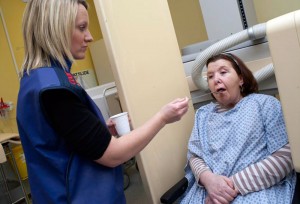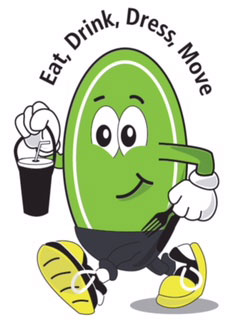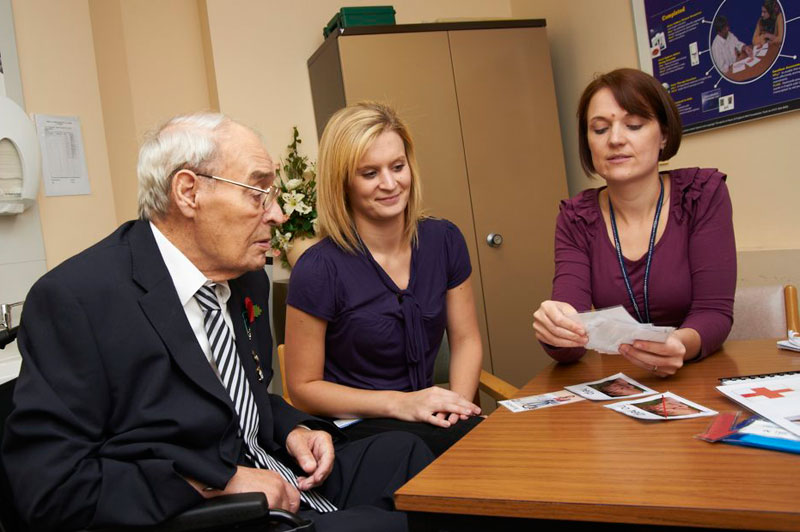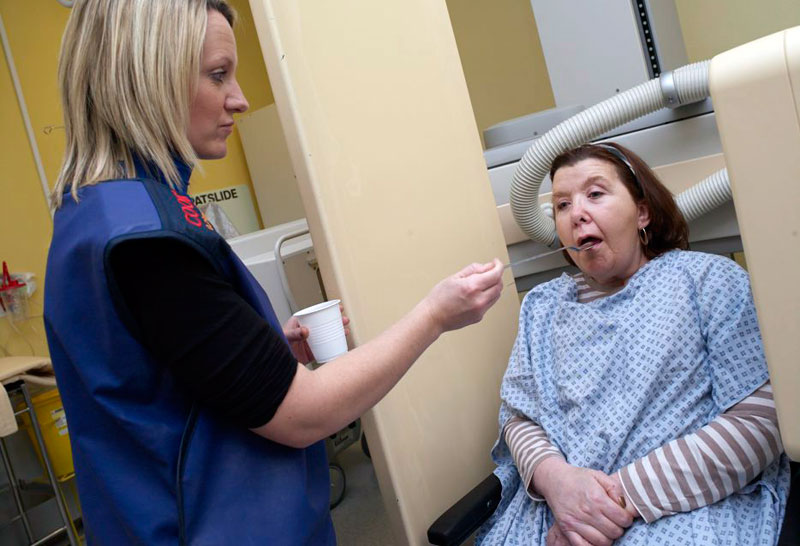 What is a swallowing problem?
What is a swallowing problem?
Dysphagia is the medical term used to describe difficulties in swallowing. Difficulties in swallowing can be caused by problems in the mouth (the oral phase), the throat (the pharyngeal phase) or the food pipe (the oesophageal phase). Significant problems in swallowing can cause weight loss and chest infections
What can cause a swallowing problem?
Causes of swallowing problems can be broadly classified into different groups. They can be caused by:
Physical or mechanical obstruction
Head & neck cancers
Congenital abnormalities
Diseases of the brain
Parkinson’s Disease
Dementia
Brain tumour
Multiple sclerosis
Motor Neurone Disease
Injury to the brain
Stroke
Head Injury
Cerebral Palsy
Muscle disorders or diseases
Myasthenia Gravis
Muscular Dystrophy
Myopathys
Huntington’s Disease
Side effects of medication or medical treatment
Radiotherapy
Drug-induced dysphagia
What does a swallowing problem look like?
Swallowing problems can manifest in all sorts of ways. Some of the most common things people report are listed below:
“When I eat and drink I…
Cough & splutter
Find it hard to breathe
Get a rattling chest or gurgly voice
Find things get stuck in my throat”
People with long-standing swallowing difficulties may also suffer from weight loss or recurrent chest infections.
How can an SLT help with swallowing difficulties?
Speech & Language Therapists are specially trained to assess and manage people with swallowing problems. We look very closely at problems that have gone wrong in the mouth or in the throat.
How do we assess swallowing problems?
In most cases we will assess a person’s swallow ‘at bedside’ or in a clinic room. This involves a thorough case history, a detailed oral examination and close observation of the patient eating & drinking. On occasion we will refer a patient on for further assessment of their swallowing – either via videofluoroscopy (VF) or Fibreoptic Endoscopic Evaluation of Swallowing (FEES).
How do we manage swallowing problems?
Swallowing problems can cause food and drink to go down the wrong way. This is called aspiration. In order to keep the swallow as safe and as easy as possible we may offer the following:
- Exercise & therapy
- Swallowing techniques
- Diet & fluid advice
In some cases it may be appropriate to consider alternative means of feeding such as a nasogastric tube (NGT) or percutaneous endoscopic gastroscopy (PEG).
Glossary
VF: This is an x-ray of your swallowing. The patient is asked to eat & drink specially-coated food & drink in front of an x-ray machine.
FEES: A small camera on the end of a tube is passed into the nose & looks down upon your throat. This camera films your throat as you eat and drink.
Aspiration: This is the passage of food & fluid into the lungs.
Aspiration pneumonia: This is a chest infection caused by food & drink entering the lungs.
Nasogastric Tube (NGT): A feeding tube that passes into the nose & down into the stomach. Usually used if alternative feeding is temporary.
Percutaneous Endoscopic Gastroscopy (PEG): A feeding tube that passes straight into the stomach. This involves a small operation and is usually used when alternative feeding is needed on a more permanent basis.
How can I get SLT help?
Please click on the following link for information on referrals to Speech and Language Therapy














